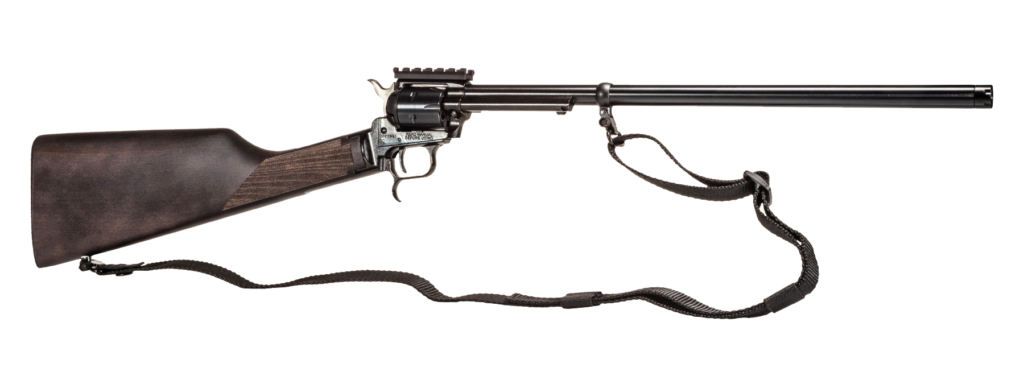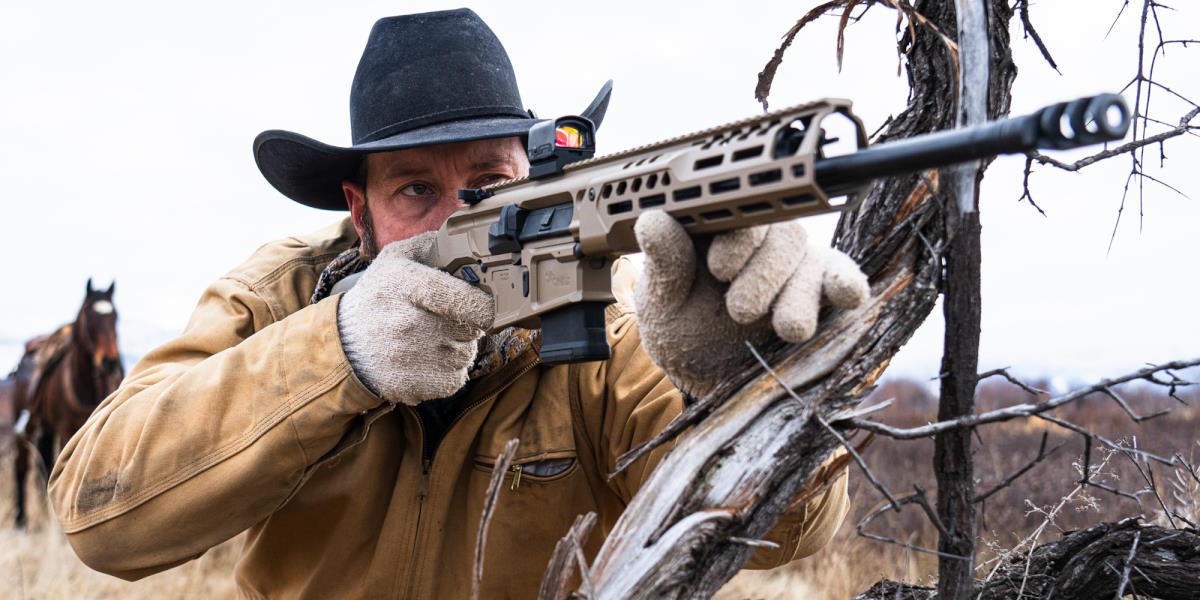Today, I want to talk about the idea of the Ranch Rifle. As far as I can tell, Ruger was the first to popularize the term. These days, it’s been applied to a few guns, and like many, I’m left wondering what exactly makes a ranch rifle. I like weird weapon genres. Stuff that escapes the larger cultural zeitgeist of the American gun-buying public. Stuff like tackle box guns, for example. It’s very niche and seemingly unknown to most gun owners.
I started by asking the only rancher I know what rifle he totes while working, and he doesn’t tote a rifle. He has a Beretta 21A in his pocket and an old Stevens pump action shotgun in his truck. So, no Ranch rifle is to be found or defined. Since asking a rancher was a bust, I had to rely on the marketing material from firearm companies to better determine what precisely a ranch rifle is.
Where Did Ranch Rifles Come From
As mentioned, the earliest use of the term I can find relates to the Ruger Mini 14 Ranch Rifle. The Mini 14 and the term Ranch Rifle have become synonymous, but the ranch model did have a few different features from the standard prior to 2004. The ranch version of the Mini 14 had a mechanical ejector and a flip-up rear sight, and it was set up for Ruger scope rings.
Advertisement — Continue Reading Below

Ruger took the American series in the ranch direction. The Ruger American Ranch Rifle is a mouthful. These Ruger Americans were made to be lighter and more compact, with 16-inch barrels and what’s more or less intermediate power rounds. Rounds like 350 Legend and 450 Bushmaster don’t count as intermediate, but they can fit in a standard AR action.
Ruger leaned hard into the term, but it wasn’t the only company to do so. Heritage made a big version of its Rough Rider. They pushed the barrel to 16 inches, added a stock, and called it the Rancher. It’s a .22LR that’s easy to swap to a .22 Magnum. There is also a tactical Rancher for those who want to mount optics. These are single-action revolver rifles, so they are somewhat odd.
Advertisement — Continue Reading Below

Foxtrot Mike makes a rifle called the Ranch Rifle. It’s an AR-15-based rifle with a proprietary lower that eliminates the pistol grip and accepts Remington 870 stocks. FM even sells a model with the Woox wood stock. The bolt design is proprietary, but the rifle can use almost any AR upper.
In that same vein of shotgun stock equipped AR-like rifles, the SIG MCX Regulator also uses the term ranch rifle in its product description. It’s the same idea with an MCX short-stroke gas piston spin.
Advertisement — Continue Reading Below
What Can We Gather?
If I were just looking at these guns, it would seem like there is a theme to the ranch rifle. It tends to be a repeating rifle. The rifle also appears to stress a lightweight design with a low-recoiling cartridge. Control seems to be the idea behind the common chamberings of the cartridges present. Basically, if it works with a multical AR lower, it can be used in a ranch rifle.

There is also a lean away from tactical design for whatever reason. I don’t quite see an advantage to using straight stocks with semi-pistol grips. I don’t think they offer any advantage, but they certainly don’t offer much of a downside. Ranch rifles also tend to stick with a certain aesthetic.
Advertisement — Continue Reading Below
That aesthetic is old-school cool. I dig it, personally. I like wood stocks, and I’m one of the rare guys who likes the AR with a shotgun stock look. The term ranch rifle certainly invokes a Wild West appeal, and Wild West guns didn’t have collapsing stocks or pistol grips. If I worked a ranch, I’d likely think a stock standard AR rifle or carbine of some type would work perfectly fine and arguably be a bit cheaper for riding around in a pickup truck.

The advantage I see in the lack of modern tactical parts and pieces is the ability to shove the rifle into some form of scabbard hanging off the side of a horse. A pistol grip or big A-frame front sight might make that tricky; thus, the old-school stocks tend to work well for this very niche use.
Advertisement — Continue Reading Below
Ranch rifle is most certainly a term that is more applied to aesthetics, but that’s okay. All-black furniture, M-LOK handguards, and similar features get boring after a bit. So, we can all indulge in some Monte Carlo stocks and wood furniture every now and then.















